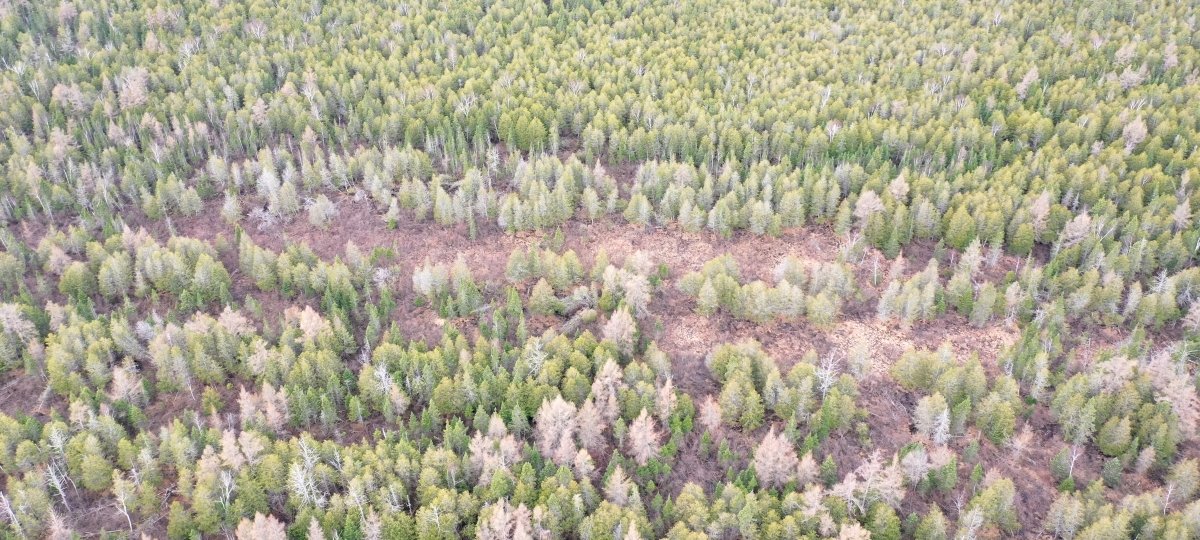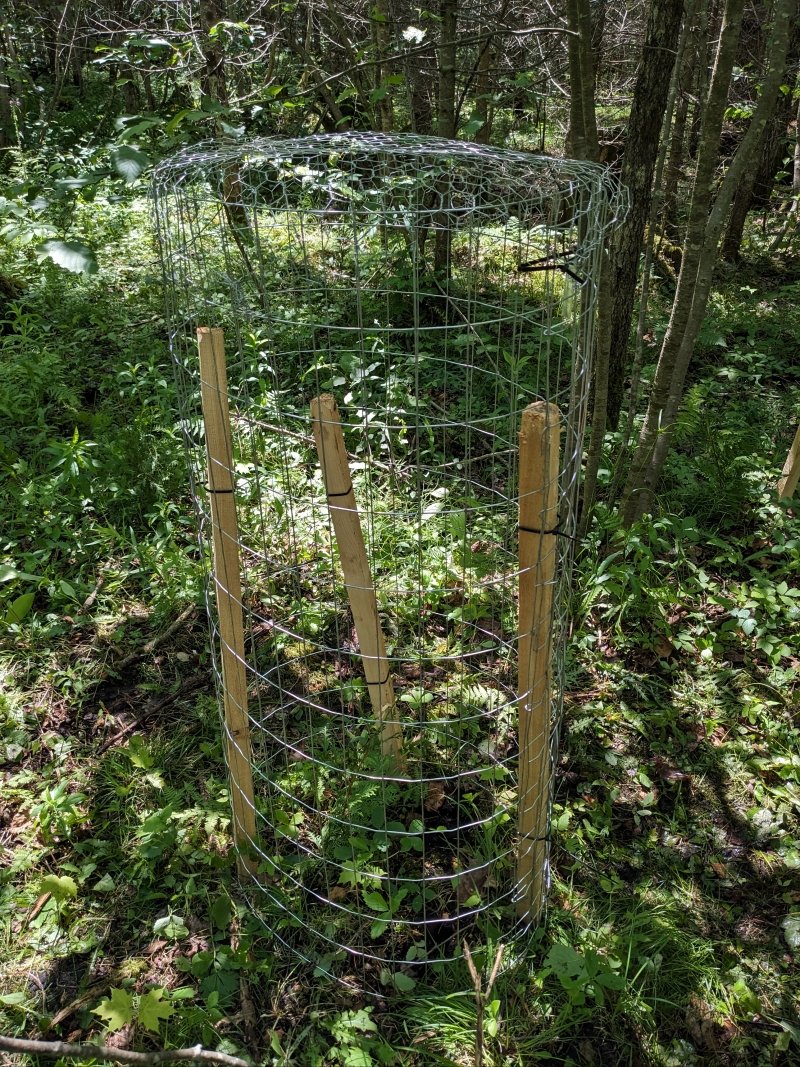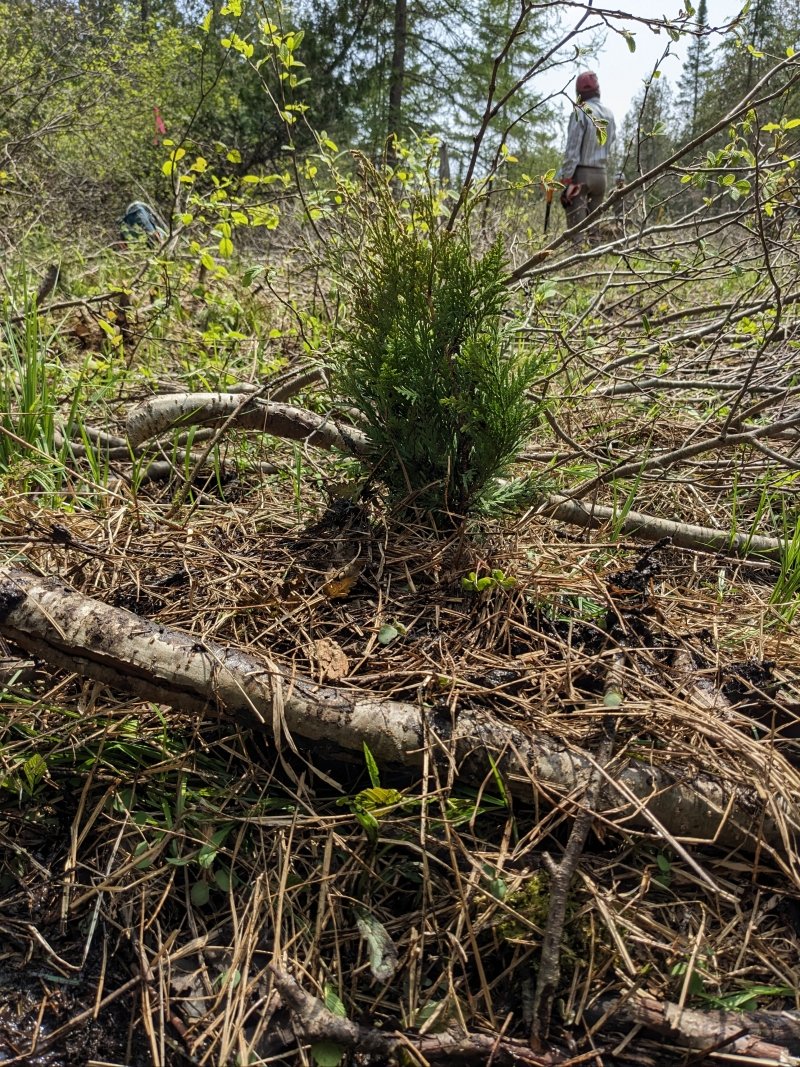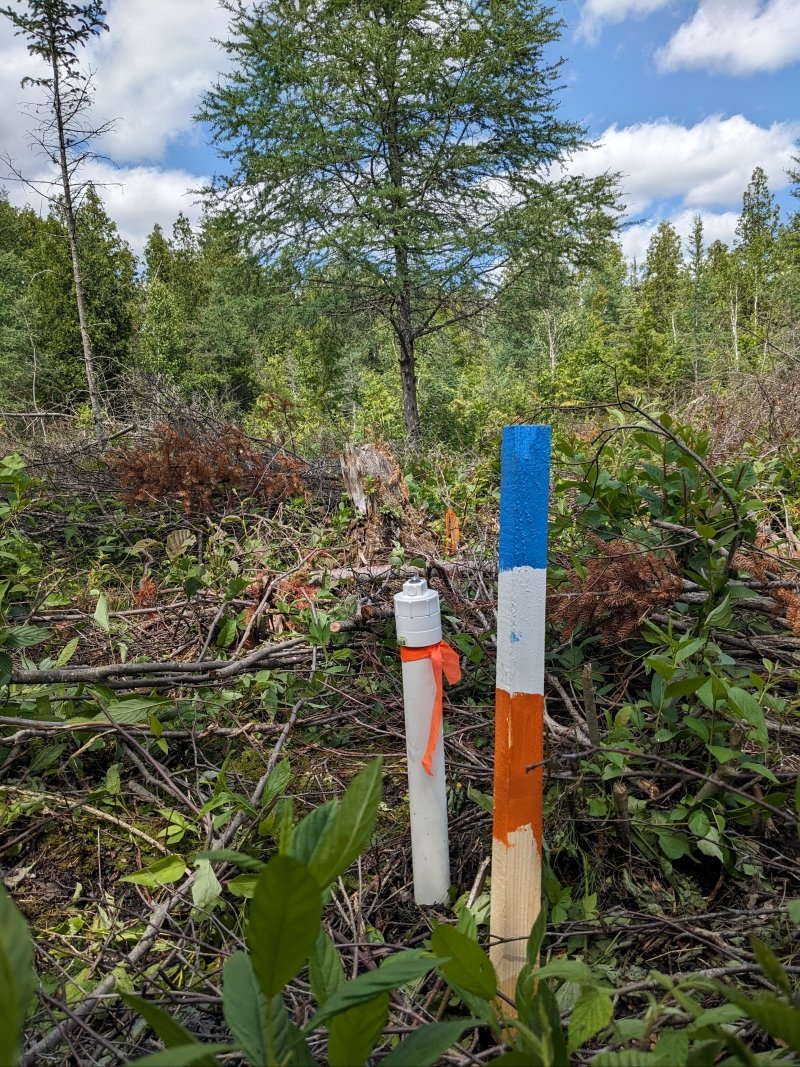Introduction:
Northern white-cedar (cedar; Thuja occidentalis L.) swamps are important ecosystems in the upper Great Lakes region. The organic soils of cedar swamps contain large stores of carbon and their undulating surface microtopography fosters diverse plant life, including many rare and endangered species. The dense coniferous canopy created by cedar trees creates a moderated microclimate with lighter winter snowpack, making these forests an important habitat for many animals. Unfortunately, cedar in the Great Lakes region has been reduced over the last century, in part due to cedar regeneration and recruitment failures with other species replacing cedar where it was historically a dominant species. Remaining cedar swamps have experienced a shift in age-class diversity, with very few young cedar remaining. A lack of age-class diversity poses a threat to the future of cedar swamps because younger smaller cedar are not present to replace older cedar in the forest as canopy cedar experience mortality from age, natural disturbances like blowdowns, or timber harvesting.
Restoration Goal:
The goal of this project is to identify and test restorative silviculture treatments. These treatments aim to restore cedar in swamps where it has been lost and to improve cedar regeneration and recruitment in swamps with a lack of age-class diversity.
Location:
This study is conducted in the Upper Peninsula of Michigan on Michigan Department of Natural Resources lands.
Activities:
Treatments are being tested for two types of conditions; (1) sites that were historically a cedar swamp but converted to an alternate cover type after a timber harvest and (2) cedar swamps that are cedar dominated but are lacking in age-class diversity. In sites that were historically cedar dominated swamp but transitioned to an alternate cover type after a timber harvest, non-cedar species are removed at varying intensities and cedar is planted. Planted cedar growth is monitored and some are protected by single-tree browse protectors to test the effects of deer browse pressure on planted cedar. In cedar swamps that are lacking age-class diversity, silviculture treatments remove portions of the overstory at varying intensities and spatial arrangements. These treatments focus on removing non-cedar species and cedar of poor vigor to create partially shaded environments meant to encourage cedar regeneration. The silviculture treatments tested will help answer questions regarding best methods for regenerating and recruiting cedar in cedar swamps to improve age-class diversity. Measurements are done at the restoration sites that monitor the vegetation, mammal browse, forest floor microtopography, woody debris, peat depth, pH, and depth to water table.
Partners:
The MICEDAR project is a collaboration between Michigan Tech (Rod Chimner, Robin Clark, Chris Webster, Victoria Hunter, Claudia Bartlick), US Forest Service (Laura Kenefic, Christel Kern), and Michigan DNR (Jason Hartman).



